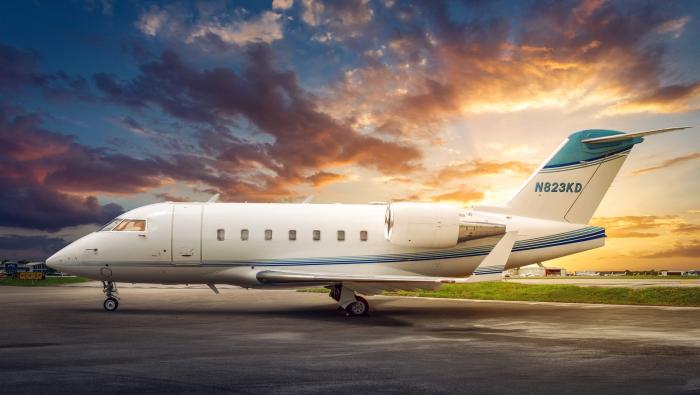Members of the Citation Jet Pilots (CJP) association gathered in Nashville in early October to celebrate their safety record and continue learning how to improve and share CJP safety information with the Citation pilot community.
For the third year in a row, CJP members have not had any incidents or accidents, a remarkable record for the 1,358 members who fly 954 Citations. “We have very good fliers,” said Charlie Precourt, former Space Shuttle commander, chairman of the CJP safety committee, and owner of a CJ1+.
Precourt shared some initial results of the CJP flight operations quality assurance (FOQA) program, which uses the ForeFlight Data Analysis system (formerly CloudAhoy) for post-flight analysis. The FOQA system has already recorded 5,000 flights by CJP members, and a few “items are warranting attention,” he said. For the most part, CJP members are flying better than average industry standards on unstable approaches.
“In less than 2 percent [of approaches] would we trigger the unstable approach criteria,” he said, “while the industry standard is 3 percent instability at a gate.”
A gate is a point where a pilot has to determine either if the approach is stable or if a correction needs to be made or a go-around initiated. While most stable approach criteria use gates at 1,000 feet (IFR) and 500 feet (VFR), the CJP’s Safe To Land initiative has selected a more flexible final gate of 200 feet where pilots must go around if stable approach criteria aren’t met. This gives pilots more flexibility to make corrections, within certain parameters, from 500 feet to 200 feet. “We implemented the lower gate to 200 feet,” Precourt explained. “If we included that, we’d be much less than 2 percent. There are a lot of unstable approaches being fixed between 500 and 200 feet.”
Interestingly, the data show that exceedances are occurring 10 times more on visual approaches compared to IFR approaches, and visuals are flown 50 percent of the time. These include occasional high sink rates below 1,000 and 500 feet during visual approaches, including some as high as 2,500 fpm for more than six seconds below 1,000 feet. “What is pushing people into that corner, and can we do something?” he asked.
Some of this may be due to air traffic control (ATC) instructions, but CJP is planning to launch a project to study these anomalies. To mitigate these situations, Precourt recommended, “The use of the word ‘unable’ [with ATC] is the most powerful tool you have. They can’t fly your airplane.”
Other parameters are showing good results—for example, the Safe To Land goal of not exceeding a 15-degree bank below 200 feet. “We are doing well with this,” he said. Pilots are maintaining the proper landing reference speed (Vref) at the runway threshold, and touchdown point is “most densely packed at [the correct] 1,000 feet.”
That said, the CJP FOQA parameters are still a work in progress, and some items aren’t being used because the parameters aren’t yet trustworthy. “We’re working towards getting all of them turned on,” he said. “We want to get you accurate information.”
Some of the parameters that haven’t been switched on and need further research include runway remaining, but the trend at meeting the parameter of slowing to 70 knots by 1,000 feet runway remaining is a “good trend,” according to Precourt. N1 rpm on final is another parameter that likely will be switched on, and this measures whether the power setting is stable during the approach. “If you’re at idle for 25 or 30 seconds [on approach], you’re struggling,” he said.
Precourt outlined an ongoing discussion about traffic pattern operations for Citation pilots. FAA best practices say to avoid straight-in approaches unless flying an IFR approach. But when in visual conditions, the best way to enter the traffic pattern is over the airport, then turn on downwind leg but 500 feet above the light airplane traffic pattern altitude. Speed on downwind should be Vref+20, and below 2,000 feet, the maximum descent rate should be 1,000 fpm.
At an airport with parallel runways, use an instrument approach or the avionics’ visual approach feature to set up guidance to the correct runway. Two mid-air collision accidents, at North Las Vegas (2022) and Centennial, Colorado (2021), were due to one of the aircraft not properly lining up with the assigned runway. "Having a backup approach in your FMS is really advised,” he said.
Another critical element for visual approaches that aren’t straight-in is to maintain the correct distance from the runway while flying the traffic pattern in a jet. The downwind leg is best flown at 1.5 to 2 nm from the runway, and base leg should be no closer than 2.5 nm from the runway threshold, Precourt advised, but 3 nm is best. After stabilizing at 160 knots on downwind, pilots should set landing configuration (landing gear down and full flaps) before turning base and then slow to Vref+10.
An ongoing debate is about whether pilots should follow vertical glide path guidance from an ILS or LPV approach when the visual glide path indicator (PAPI or VASI) becomes visible or transition to the glide path indicator. “Some PAPIs or VASIs are not coincident with the ILS,” he said. But pilots should transition to following the PAPI or VASI at decision altitude because they provide obstacle clearance, while the ILS or LPV vertical guidance provides obstacle clearance only to the end of the approach, the decision altitude point. “Get off the PFD [primary flight display] glide path and transition to VASI/PAPI,” he recommended.
Summarizing his discussion of the CJP FOQA program, Precourt said, “We’re being given a gift with this data. We are three years running where nobody else in general aviation can touch our record. This is a big part of our success in our future.”







